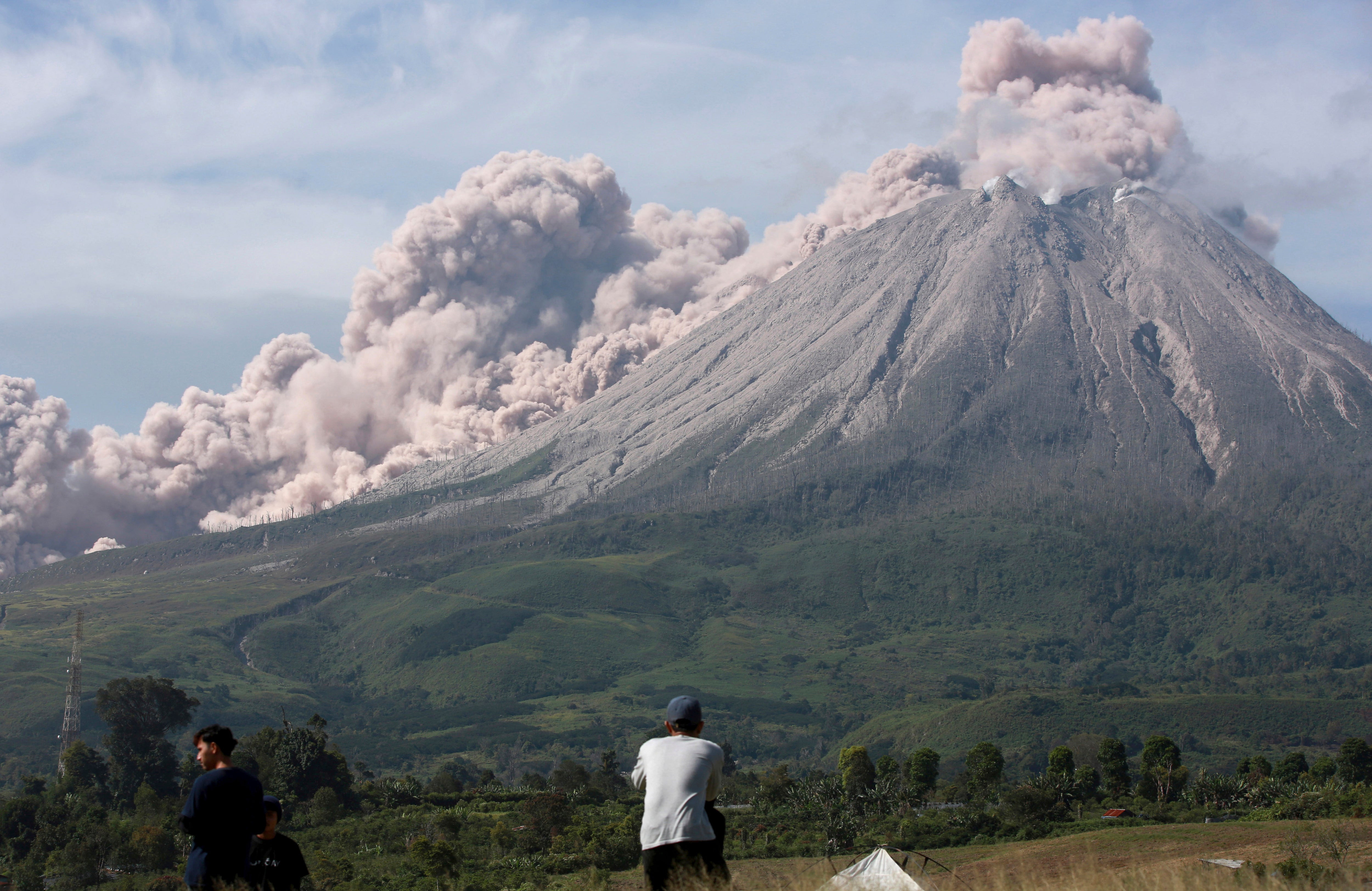Indonesia’s Sinabung volcano unleashes new burst of hot ash
Indonesia's Mount Sinabung has unleashed an avalanche of searing gas clouds down its slopes in another volcanic eruption

A rumbling volcano on Indonesia’s Sumatra island unleashed an avalanche of searing gas clouds flowing down its slopes during eruption on Thursday. No casualties were reported.
Mount Sinabung in North Sumatra province was shooting smoke and ash as high as 1,000 meters (3,280 feet) into the air and hot ash clouds traveled up to 3 kilometers (1.8 miles) southeast, Indonesia’s Volcanology and Geological Hazard Mitigation Center said.
There were no casualties from the eruption, said Armen Putra, an official at the Sinabung monitoring post. He said villagers were advised to stay 5 kilometers (3.1 miles) from the crater’s mouth and should be aware of the peril of lava.
The alert is being maintained at the second-highest level while authorities are closely monitoring the volcano after sensors picked up increasing activity in past weeks.
The 2,600-metre (8,530-feet) mountain has been rumbling since last year. It was sending volcanic materials more than 5,000 meters (16,400 feet) into the sky and depositing ash on nearby villages when erupted early this month.
Some 30,000 people have been forced to leave homes around Sinabung in the past few years.
Sinabung was dormant for four centuries before exploding in 2010, killing two people. Another eruption in 2014 killed 17 people, while seven died in a 2016 eruption.
The volcano, one of two currently erupting in Indonesia, has sporadically come to life since then.
Sinabung is among more than 120 active volcanoes in Indonesia, which is prone to seismic upheaval due to its location on the Pacific “Ring of Fire,” an arc of volcanoes and fault lines encircling the Pacific Basin.